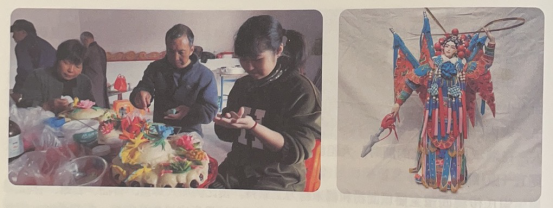申报地区:偃师市 2020年08月 第4批扩展项目

相关项目:面塑(涧西区,2007.12入选市级第1批)
河洛面塑由祭祀“端馔”演变而来,古人常以人牲祭及焚巫祭祀,随着社会进步,开始以“面塑”人物配以牛、羊、豕等,取代活人祭祀,元、明、清时期,在洛阳仍保留着祭祀“端馔”习俗,并在民间广为流传。
河洛面塑直接传承谱系由清末民初为起源,第一代宗师为偃师南部面塑大师郭龙车(ju),郭龙车家庭世代为“端馔”匠作中的面塑艺人,后收徒李金平等十二人,李金平传其子李荣庆等,李荣庆传侄李宏超,目前已传至五代。河洛面塑形象逼真,造型生动活泼、色彩鲜艳,作品内涵丰富,和谐悦目,形式多样,不拘一格,易于保存。和民间生活息息相关,具有艺术审美功能,礼仪民俗功能,与本地民俗活动,风俗风情紧密联系并随之发展变化着。它保留了豫西乃至中原地区以祭祀活动为特点的传统民间文化,是研究豫西地区民众祭祀礼制活动和生活情况的重要依据,在民俗学研究中具有不可替代的作用,具有民族文化传承和教育功能。
Heluo Dough Figurine evolved from the sacrifice food. The ancients often used human sacrifices and witch-burning sacrifices. With the progress of society, they began to replace the sacrifices of living people with cows, sheep, cows, etc. During the Yuan(1271-1368), Ming(1368-1644)and Qing(1636-1912)Dynasties, the custom of offering sacrifices was still preserved in Luoyang, widely spreading among the people. The direct inheritance pedigree of Heluo Dough Figurine originated from the late Qing Dynasty and the early Republic of China. The first grandmaster of dough figurine was Guo Longju living in the south of Yanshi. Guo Longche's family had been the dough figurine artists for generations. He had 12 apprentices including his son and nephew, and now the dough figurine has been passed down to five generations. The Heluo dough figurine works, with lifelike image, lively shapes, bright colors, rich connotation, eclectic styles and carious form, are easy to preserve. Closely related to folk life, it has the function of artistic aesthetics, etiquette and folk customs linked with the development and change of local folk activities and Retaining the traditional folk culture characterized by sacrificial activities in western Henan and the central plains, it is an important basis for studying the sacrificial ritual activities and living conditions of the people, and plays an irreplaceable role in folklore research with the function of national culture inheritance and education.
